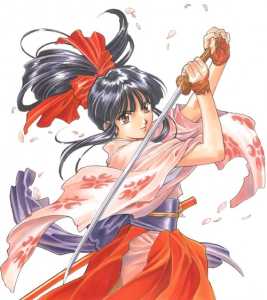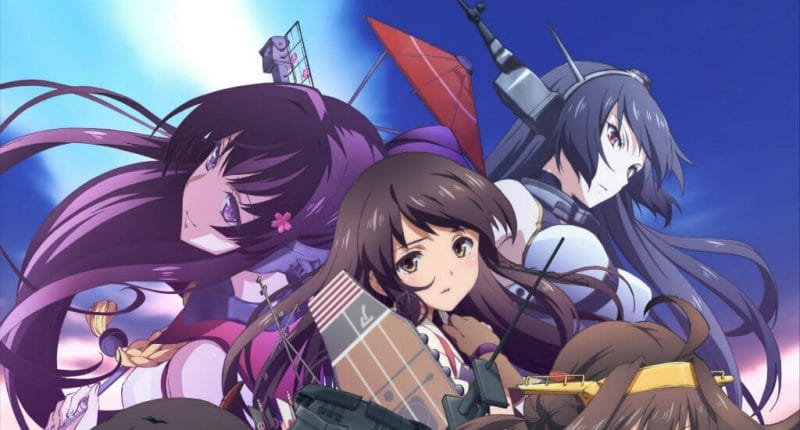 In 1996, Red Company and Sega launched the first part of what would eventually grow into a grand experiment. At the outset, this project seemed like it would be a niche offering at best: something that would move a few thousand units before being shifted to the discount bins and second-hand stores. However, as the project grew ever-closer to completion and information made its way out through gaming mags and TV features, the pensive attitudes began to melt away. By its September 27 release date, Sakura Taisen had captured the hearts and minds of a new market that would propel the franchise to incredible heights through all forms of media.
In 1996, Red Company and Sega launched the first part of what would eventually grow into a grand experiment. At the outset, this project seemed like it would be a niche offering at best: something that would move a few thousand units before being shifted to the discount bins and second-hand stores. However, as the project grew ever-closer to completion and information made its way out through gaming mags and TV features, the pensive attitudes began to melt away. By its September 27 release date, Sakura Taisen had captured the hearts and minds of a new market that would propel the franchise to incredible heights through all forms of media.
For those new to the franchise, Sakura Wars (Sakura Taisen) began its existence as a series of strategy games set in a steampunk version of Taisho-Era Japan. As a twist to the genre, Red blended the conversation elements from popular visual novels into the mix, with branching conversations that affected how characters responded to the player. Ah! My Goddess creator Kosuke Fujishima’s character designs gained the attention of the anime community, as did a top tier cast of voice actors to bring the characters to life. Chisa Yokoyama, Michie Tomizawa,and Ai Orikasa were but a few of dozens of incredible actors that lent their voices to the product.
The gameplay was wrapped within a tightly woven tale of secret government agencies, demonic wars, a country facing total annihilation, and a theater troupe. In the Taisho era, Japan transformed from a simple country to a giant, steam-powered wonderland. Automobiles rumble through the streets, and locomotives far beyond the capabities of man carry people through the city. However, demonic entities keep the population living in fear. To combat the forces of darkness, the government began recruiting those gifted with incredible spiritual abilities to batter them into submission. These special spiritualists serve as part of an elite unit known as the Imperial Defense Brigade. Navy ensign Ichiro Ohgami is the latest recruit to the unit’s Flower Brigade (Hanagumi). He receives word to go to Tokyo’s Imperial Theater for further instruction. However, when he arrives, he finds a female theatrical group known as the Flower Troupe (Hanagumi)performing. As it turns out, the Imperial Defense Brigade uses the theater as a front for their operations,and the players on-stage are in fact the very people that he’d fight alongside!
While the title certainly was a popular seller in Japan (and an import classic in the west), the franchise is most notable for finding ways to remain relevant over the course of its 16-year existence. Sakura Wars is, without a doubt, one of the most carefully managed series in gaming history. After the initial success of the first title, Sega placed the franchise high on its priority list. In addition to an advertisement in the company’s “Segata Sanshiro” series of commercials (below), Sega commissioned OVAs for the series in 1997 and 1999. The title’s popularity was so great that, in 1998, Sakura Wars-themed cafe Taisho Romando was opened in Ikebukuro.
[yframe url=’http://www.youtube.com/watch?v=JtDZi8v7Gdg’]
As the years went on, Sakura Wars continued to branch away from gaming. In 2000, two years after the second video game, the series saw a revival in the general market through a 26-episode television series by Madhouse. The series was a significantly altered retelling of the original Sakura Wars, which attempted to expand on the now-familiar cast and world of the series. Sega and Red took steps to make the world of Sakura Wars into something living and breathing with this title, which was followed closely by a theatrical film in 2001 and OVA Sakura Wars: Sumire in 2002. Sakura Wars: Sumire was a retirement special for franchise character Sumire Kanzaki (voiced by Michie Tomizawa). Rather than simply write the character out of the franchise, Sumire’s retirement was handled with a graceful hand, to give finality to her own story while ensuring that her place in the world was secure. OVAs continued to roll out until 2007, when Sakura Taisen: New York NY. was released to retailers.
Outside of the core anime and gaming markets, Sakura Taisen used another medium to attract customers. Beginning in 1997, stage shows based on the franchise were ran twice per year. In these events, the tales of the Hanagumi were acted out for patrons by the very actors that breathed life into the characters’animated adaptations. Infectious musical numbers, an enthusiastic cast and tales of excitement attract viewers from across Japan. The content continued to evolve for these audiences as new members were added, and plotlines were updated to reflect new titles in the franchise. Even though the final Sakura Wars game hit retailers in 2005, these stage shows continue to run to this day. Through their continued operation, the Sakura Wars line continues to gain and keep followers even as the years continue to rush by.
Sakura Wars was able to not only survive, but thrive for sixteen years through a combination of careful planning and willingness to extend into new forms of entertainment. What began as a video game quickly splintered into anime, musicals, and even books to cater to a wide range of demographics and age groups that would normally be simply unreachable through traditional marketing approaches. All the while, a focus on maintaining the franchise world and fresh content ensure that these groups will continue to patronize the product. While Sakura Wars has surely seen stronger days as a brand, there are still many that would kill for its lasting appeal.











